Papers in 2021
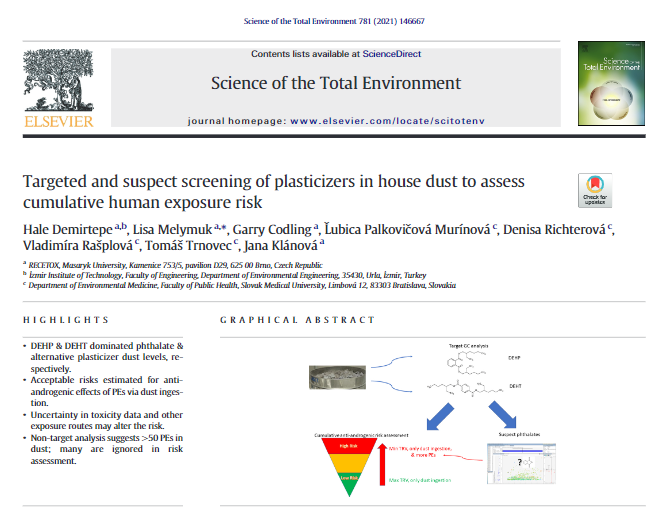
Targeted and suspect screening of plasticizers in house dust to assess cumulative human exposure risk

Land deformation and sinkhole occurrence in response to the fluctuations of groundwater storage: an integrated assessment of GRACE gravity measurements, ICESat/ICESat-2 altimetry data, and hydrologic models
Uncontrolled extraction of water from groundwater aquifers causes groundwater depletion, which in turn triggers the formation of sinkholes. Monitoring and detection of these geomorphologic features are of utmost importance. This study investigated the spatio-temporal associations of groundwater storage changes with sinkhole evolution and land deformation.
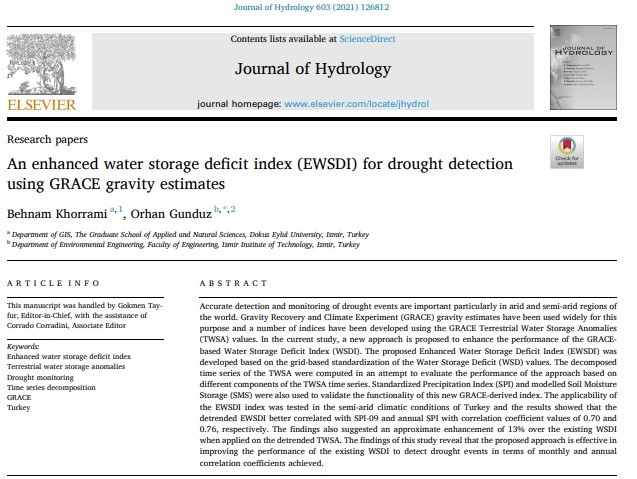
An enhanced water storage deficit index (EWSDI) for drought detection using GRACE gravity estimates
In the study titled “An enhanced water storage deficit index (EWSDI) for drought detection using GRACE gravity estimates” prepared in our department, a new method that improves the results of the water storage deficit index (WSDI), used to detect droughts in terrestrial areas using GRACE satellite data, was defined and applied to Turkey which has a semi-arid climate and demonstrated its efficiency.
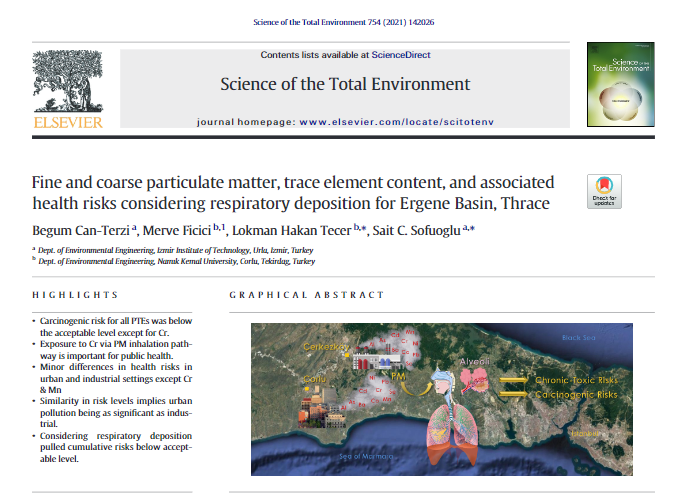
Fine and coarse particulate matter, trace element content, and associatedhealth risks considering respiratory deposition for Ergene Basin, Thrace
Ergene Basin is located in Thrace, Turkey, where industries are densely populated. Fine and coarse PM samples were collected daily for a year at points in Çorlu and Çerkezköy representing urban and industrial settings. The only potentially toxic elemnt (PTE) that exceeded acceptable risk in terms of total carcinogenic risk was Cr. Non-carcinogenic risks of all the PTEs including Cr were below the threshold.
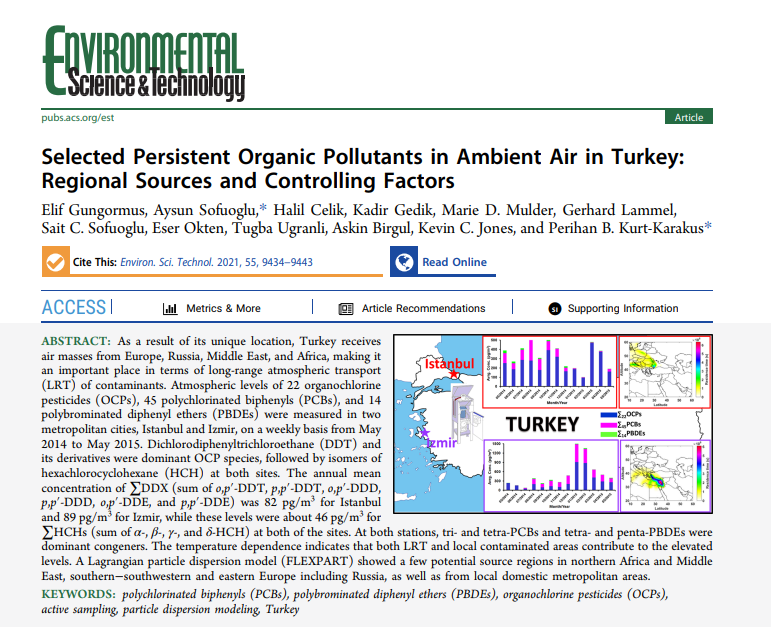
Selected Persistent Organic Pollutants in Ambient Air in Turkey: Regional Sources and Controlling Factors
As a result of its unique location, Turkey receives air masses from Europe, Russia, Middle East and Africa. Atmospheric levels of 22 organochlorine pesticides (OCPs), 45 polychlorinated biphenyls (PCBs) and 14 polybrominated diphenyl ethers (PBDEs) were measured in Istanbul and Izmir.
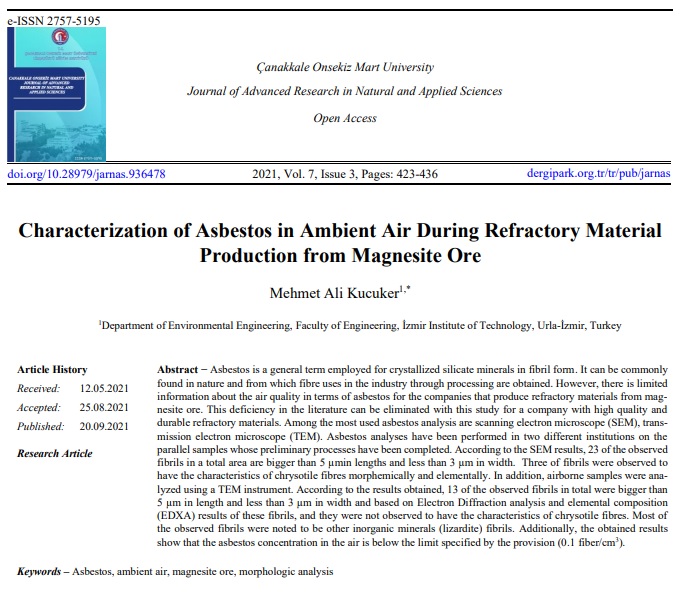
Characterization of Asbestos in Ambient Air During Refractory Material Production from Magnesite Ore
In many industrial establishments, the air quality of the working environment is constantly examined. According to the literature, it has been noticed that asbestos and its derivatives are observed in the ambient air where some industrial activities take place. However, there is limited information about the air quality of the working environment in terms of asbestos for companies producing refractory materials from magnesite ore. In order to fill this gap in the literature, IZTECH Environmental Engineering Department Lecturer Dr.-Ing. Mehmet Ali Küçüker performed asbestos analysis with the help of electron microscopes (SEM and TEM) by taking air samples from the working environment where the mentioned industrial activities took place, and determined the characterization of the observed fibers.
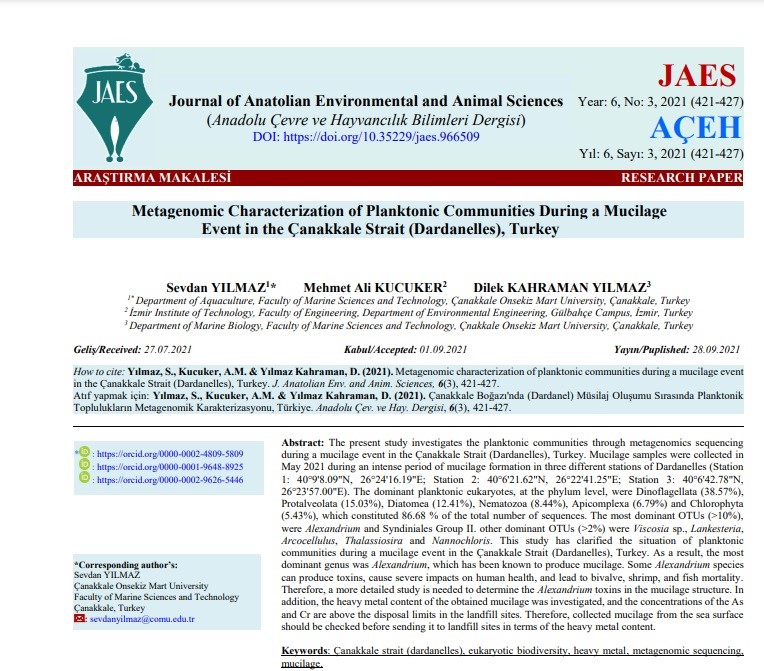
Metagenomic characterization of planktonic communities during a mucilage event in the Çanakkale Strait (Dardanelles), Turkey
Our department faculty member Mehmet Ali Küçüker published an article about mucilage, one of the hot topics of this summer: Metagenomic Characterization of Planktonic Communities During a Mucilage Event in the Çanakkale Strait (Dardanelles), Turkey.
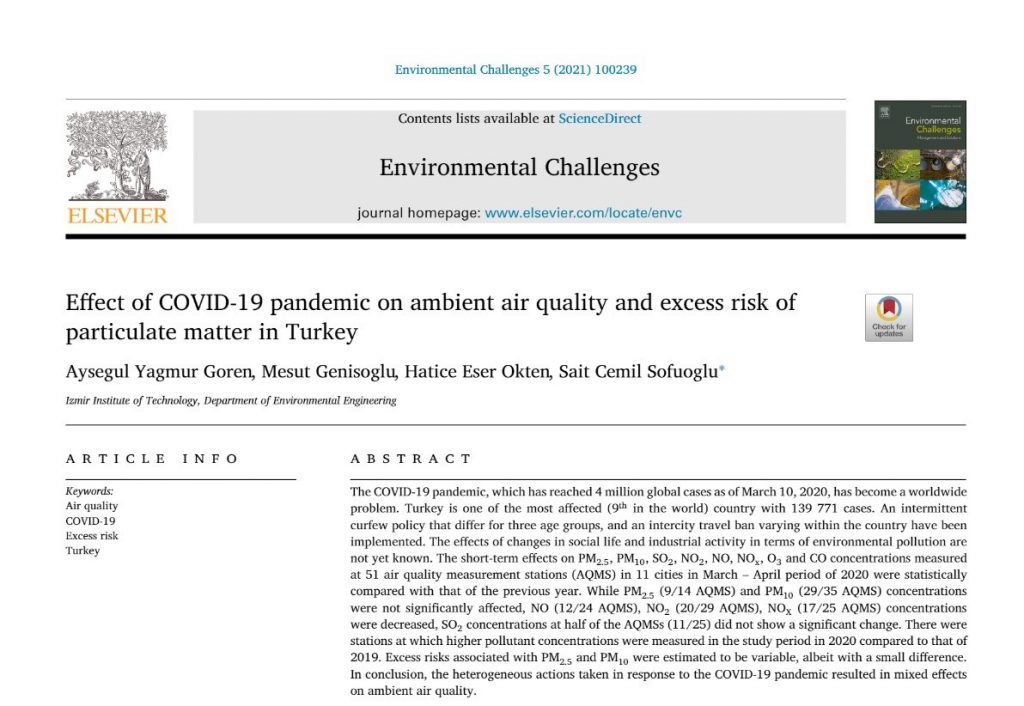
Effect of COVID-19 pandemic on ambient air quality and excess risk of particulate matter in Turkey
The COVID-19 pandemic, which has reached 4 million global cases as of March 10, 2020, has become a worldwide problem. Turkey is one of the most affected (9th in the world) country with 139 771 cases. An intermittent curfew policy that differ for three age groups, and an intercity travel ban varying within the country have been implemented. The effects of changes in social life and industrial activity in terms of environmental pollution are not yet known. Excess risks associated with PM2.5 and PM10 were estimated to be variable, albeit with a small difference. In conclusion, the heterogeneous actions taken in response to the COVID-19 pandemic resulted in mixed effects on ambient air quality.

Biosorption of methylene blue from water by live Lemna minor.
In recent years, phytoremediation technology, which is a low cost, high removal efficiency and promising method, has been used for the effective treatment of textile wastewater. Among the most important advantages of phytoremediation technology are the fact that it does not need energy and that it is easy to operate that allows on-site treatment. In this study, treatment of methylene blue containing synthetic solutions using Lemna minor L. plant was studied. In addition, Box–Behnken experimental design (BBD) was applied to examine the individual and combined effects of operating parameters on methylene blue removal efficiency.

Phytoremediation of Boron using Lemna minor from Synthetic Aqueous Solutions and Real Geothermal Water.
In this paper, phytoremediation performance of Lemna minor L. on boron (B) removal from synthetic solution and real geothermal brine was evaluated. Effects of B concentration, initial pH, water height in cell, and initial humic acid concentration were investigated. The maximum removal efficiency was 96.7 % with the experimental run with B concentration of 5 mg L-1, pH 8, and 1.5 cm water depth. SEM, FTIR, and mass balance analyses revealed that the boron removal mechanism was mainly biosorption. Geothermal water experiments indicated L. minor’s applicability with 59.5% removal efficiency, proving high potential in being used for post-treatment of geothermal waters with high boron content.
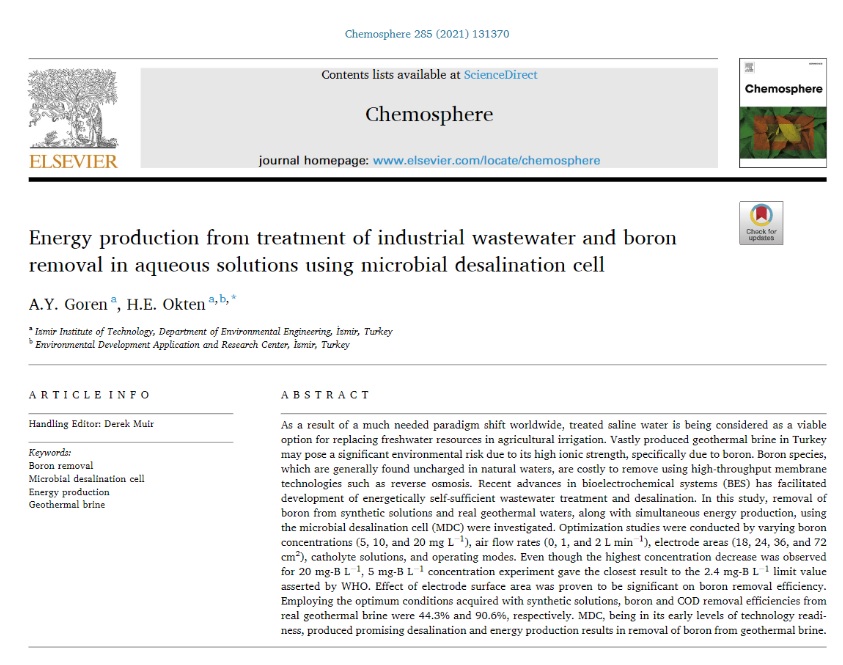
Energy production from treatment of industrial wastewater and boron removal in aqueous solutions using microbial desalination cell.
The study titled “Energy production from treatment of industrial wastewater and boron removal in aqueous solutions using microbial desalination cell” prepared in our department was published in the journal Chemosphere. In this study, the microbial desalination cell assembly that we installed and operated in our department was used to obtain agricultural water from geothermal wastewater.
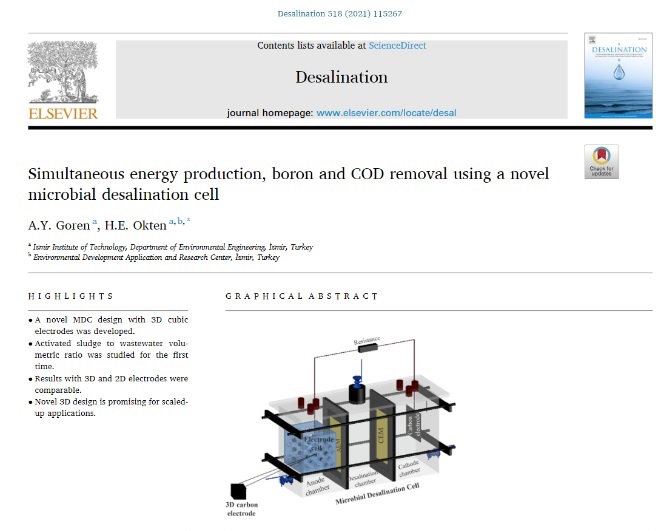
Simultaneous energy production, boron and COD removal using a novel microbial desalination cell
In the article titled “Simultaneous energy production, boron ans COD removal using a novel microbial desalination cell” prepared in our department, the effect of three-dimensional (3D) electrodes to improve conventional microbial desalination cell performance was studied. 3D electrode pieces are placed in the anode chamber with a porous cell structure and an innovative design has been created.

Phytoremediation of olive mill wastewater with Vetiveria zizanioides (L.) Nash and Cyperus alternifolius L
Olive Mill Wastewater contains high concentrations of contaminants, including organic, nitrogen, and phenolic compounds that are extremely harmful to the environment and human health. The key purpose of this study was to remove total organic carbon (TOC), total nitrogen, and phenolic compounds from OMW using floating wetland planted with Vetiveria zizanioides (L.) Nash (vetiver) and Cyperus alternifolius L. (umbrella palm) species. Overall, this study revealed that floating wetlands planted with vetiver and umbrella palm species have the potential to be used as a green treatment method to treat diluted high strength OMW.

Effect of high salinity and temperature on water-volcanic rock interaction.
In this study, the effects of salinity and temperature on water-rock interaction were investigated at laboratory scale using a pressurized autoclave reactor system. In addition, possible effects of salinity on geothermal systems were investigated using both real rainwater and seawater samples. The obtained results showed that it is important to understand the water-rock interaction in order to solve the causes of chemical and mineral changes of geothermal fluids. Considering the geothermal fluid chemistry, this study promises preliminary results to prevent crusting problem in geothermal systems in the future.
